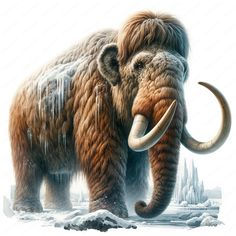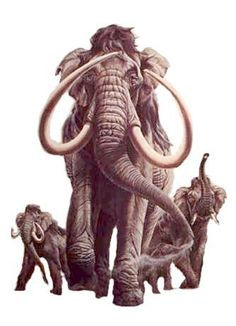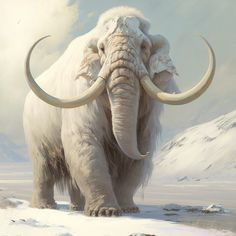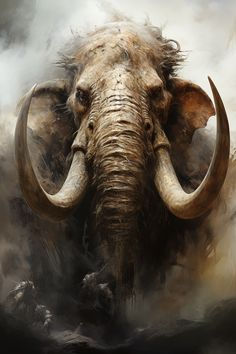Mammoths.
- vuyisandumndum23
- Jul 4, 2024
- 3 min read
Mammoth
A mammoth is any elephant of the extinct elephantid genus Mammuthus. They lived from the late Miocene epoch (from around 6.2 million years ago) into the Holocene about 4,000 years ago, and various species existed in Africa, Europe, Asia, and North America. Mammoths are distinguished from living elephants by their (typically large) spirally twisted tusks and in at least some later species, the development of numerous adaptions to living in cold environments, including a thick layer of fur.
Mammoths and Asian elephants are more closely related to each other than either of them are to African elephants. The oldest mammoth representative, Mammuthus subplanifrons, appeared around 6 million years ago during the late Miocene in what is now southern and Eastern Africa.


Later in the Pliocene, by about three million years ago, mammoths dispersed into Eurasia, eventually covering most of Eurasia before migrating into North America around 1.5–1.3 million years ago, becoming ancestral to the Columbian mammoth (M. columbi). The woolly mammoth (M. primigenius) evolved about 700–400,000 years ago in Siberia, with some surviving on Russia's Wrangel Island in the Arctic Ocean until as recently as 4,000 years ago, still extant during the existence of the earliest civilisations in ancient Egypt and Mesopotamia.
Etymology and early observations.
According to The American Heritage Dictionary, the word "mammoth" likely originates from *mān-oŋt, a word in the Mansi languages of western Siberia meaning "earth horn", in reference to mammoth tusks.[4] Mammoths appear in the folkore of the indigenous people of Siberia, who were impressed by the great size of their remains. In the mythology of the Evenk people, mammoths were responsible for the creation of the world, digging up the land from the ocean floor with their tusks. The Selkup believed that mammoths lived underground and guarded the underworld, while the Nenets and the Mansi (the latter of whom, along with the Khanty, conceived mammoths as giant birds) believed that mammoths were responsible for the creation of mountains and lakes, while the Yakuts regarded mammoths as water spirits.
The word mammoth was first used in Europe during the early 17th century, when referring to maimanto tusks discovered in Siberia, as recorded in the 1618 edition of the Dictionariolum Russico-Anglicum. The earliest scientific research paper on mammoths was by Vasily Tatishchev in 1725. John Bell, who was on the Ob River in 1722, said that mammoth tusks were well known in the area. They were called "mammon's horn" and were often found in washed-out river banks. Bell bought one and presented it to Hans Sloan who pronounced it an elephant's tooth.
In 1796, French biologist Georges Cuvier was the first to identify woolly mammoth remains not as modern elephants transported to the Arctic, but as an entirely new species. He argued this species had gone extinct and no longer existed, a concept that was not widely accepted at the time. Following Cuvier's identification, German naturalist Johann Friedrich Blumenbach gave the woolly mammoth its scientific name, Elephas primigenius, in 1799, placing it in the same genus as the Asian elephant (Elephas maximus). This name is Latin for "the first-born elephant". Cuvier coined the name Elephas mammonteus a few months later, but the former name was subsequently used, including by Cuvier. The genus name Mammuthus was coined by British anatomist Joshua Brookes in 1828, as part of a survey of his museum collection.
Thomas Jefferson, who famously had a keen interest in paleontology, is partially responsible for transforming the word mammoth from a noun describing the prehistoric elephant to an adjective describing anything of surprisingly large size. The first recorded use of the word as an adjective was in a description of a large wheel of cheese (the "Cheshire Mammoth Cheese") given to Jefferson in 1802.
Evolution.
The earliest known proboscideans, the clade that contains the elephants, existed about 55 million years ago around the Tethys Sea area. The closest relatives of the Proboscidea are the sirenians and the hyraxes. The family Elephantidae is known to have existed six million years ago in Africa, and includes the living elephants and the mammoths. Among many now extinct clades, the mastodon is only a distant relative of the mammoths, and part of the separate Mammutidae family, which diverged 25 million years before the mammoths evolved.
The following cladogram shows the placement of the genus Mammuthus among other proboscideans, based on hyoid characteristics and genetics:






















Comments